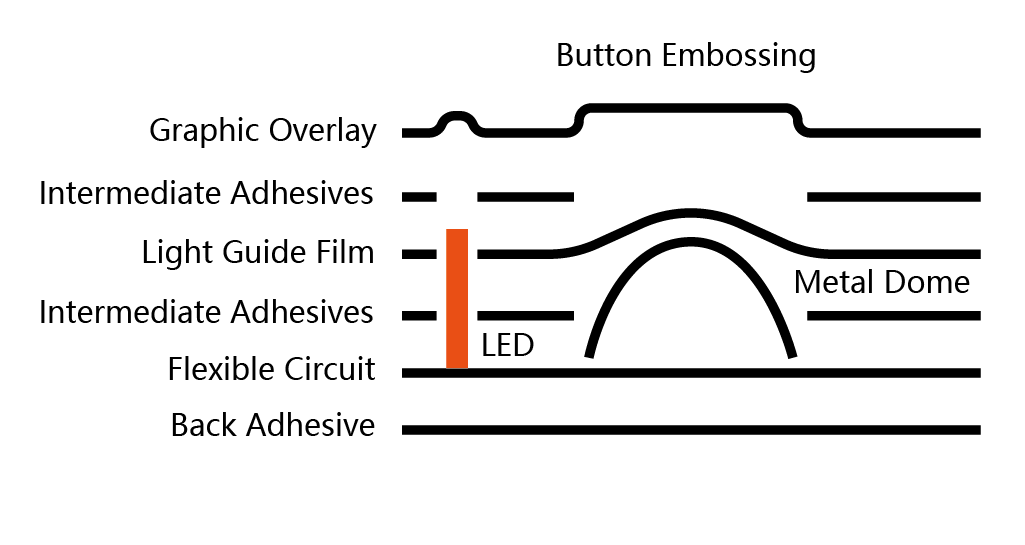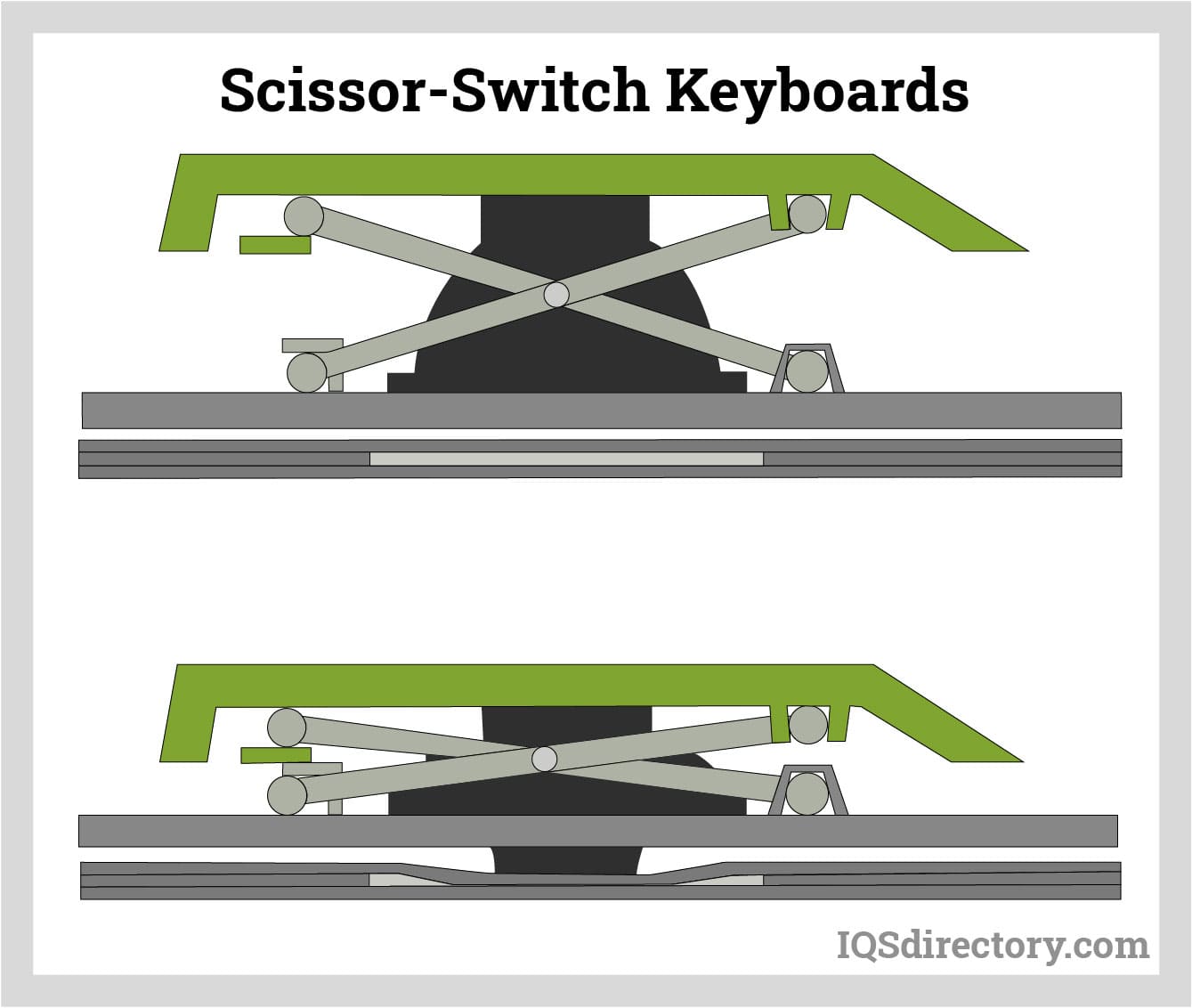The Production Refine Behind Membrane Switch Over: What You Required to Know
The manufacturing procedure behind membrane switches over combines careful layout, material option, and high quality control. It begins with recognizing the complexities of membrane layer switch layout and progresses via various phases, including product choices and printing methods. Each phase plays a crucial function in ensuring performance and durability. Nevertheless, the intricacies of layer building and the strenuous testing requirements might reveal understandings that are not immediately obvious. What exists beyond these fundamental elements?
Comprehending Membrane Layer Change Layout
Membrane buttons may show up easy at very first look, their design involves complex factors to consider that assure functionality and sturdiness. The style procedure begins with a complete understanding of customer requirements, including the user interface's desired application and ecological variables. Ergonomics is a key element, as the design should assist in simplicity of usage while making sure that responsive comments satisfies user expectations.Moreover, the layering of components, such as graphic overlays, glue layers, and conductive traces, need to be precisely crafted. membrane switch. This layered configuration not just affects the switch's responsiveness however likewise affects its long life. Attention is given to the securing strategies utilized to safeguard against moisture and dirt, which might compromise performance. In addition, style considerations reach aesthetic appeals, where color design and aesthetic clearness enhance customer experience. Eventually, the design of membrane layer changes balances capability, individual experience, and sturdiness, guaranteeing that they meet the needs of different applications effectively
Products Utilized in Membrane Layer Change Manufacturing
When picking materials for membrane layer switch production, it is necessary to contemplate both efficiency and sturdiness. The primary products consist of polyester and polycarbonate films, which provide versatility and strength. These movies are frequently covered with adhesive to assure proper bonding to substratums. Conductive inks, generally made up of silver or carbon, are crucial for developing electrical links within the button, enabling trusted operation.Additionally, a protective layer, such as a difficult layer, is often related to enhance scratch resistance and long life. The choice of backing material, such as acrylic or foam, can substantially impact the button's responsive feel and general customer experience. Moreover, different ecological variables, including temperature level and moisture, should direct product option to guarantee peak performance in certain applications. Inevitably, the right combination of materials adds to the membrane switch's functionality and life expectancy, making notified selections essential for producers.
The Printing Refine: Creating Video and Text
The printing procedure in membrane layer switch manufacturing plays a substantial duty in producing premium graphics and message. Different visuals style methods are utilized to ensure aesthetic charm and capability, while mindful ink option approaches are important for resilience and efficiency. Understanding these elements is fundamental for attaining finest outcomes in membrane layer switch layout.
Graphic Style Techniques
Graphic style methods play an essential function in the printing process of membrane layer switches, as they define how graphics and text will eventually show up on the end product. Reliable graphic layout includes the critical use font styles, shades, and designs to improve readability and visual allure. Developers commonly utilize vector graphics for scalability, making sure that pictures remain sharp at various sizes. Furthermore, attention to contrast and alignment is vital, as it affects customer communication and visual top quality. The consolidation of branding aspects, such as logo designs, have to be taken care of with care to maintain brand name honesty. In general, thoughtful graphic design methods contribute substantially to the performance and good looks of membrane layer buttons, impacting individual experience and product performance.
Ink Selection Approaches
Choosing the ideal ink is crucial for attaining the preferred visual high quality and durability in membrane layer switch manufacturing. Various ink kinds are used, including solvent-based, water-based, and UV-curable inks. Each kind uses distinctive attributes, such as versatility, attachment, and resistance to environmental factors. Solvent-based inks are usually preferred for their resilience and lively shades, while water-based inks are much more eco-friendly however may have limitations in attachment. UV-curable inks offer rapid treating and robust efficiency. In addition, shade matching techniques assure that the chosen inks line up with design requirements. Inevitably, the option of ink have to consider aspects such as application method, substratum compatibility, and end-use needs to accomplish remarkable cause membrane layer switch graphics and message.
Layer Construction and Setting Up

Product Selection Process
A mindful choice of materials is essential in the production procedure of membrane layer buttons, as it directly influences functionality and sturdiness. The key materials utilized include polyester, polycarbonate, and various conductive inks. Polyester is commonly favored for its superb resistance to chemicals and abrasion, making it appropriate for severe environments. Polycarbonate, on the other hand, provides premium quality and impact resistance, which is valuable for applications calling for presence and toughness. Conductive inks, commonly composed of silver or carbon, are important for creating reliable electrical pathways. Additionally, the option of adhesive products affects the general stability of the switch - membrane switch. Examining elements such as environmental direct exposure, responsive responses, and visual requirements overviews makers in selecting the very best products for their specific applications
Layer Attachment Methods
Adhering layers in membrane layer button construction is an important process that guarantees capability and longevity. Various bond methods are utilized to safeguard excellent bonding in between layers, which commonly consist of using adhesives, heat, and stress. Pressure-sensitive adhesives (PSAs) are commonly made why not look here use of for their convenience of application and instant bonding abilities. Furthermore, thermal bonding methods can be used, where warm is utilized to turn on glue residential properties, safeguarding a solid bond. The selection of attachment approach mostly depends on the products involved and the certain application requirements of the membrane switch. Correct positioning and consistent application of adhesives are important to protect against defects, protecting the button runs properly throughout its designated life-span.
High Quality Control Measures
Assuring quality assurance during the layer building and construction and assembly of membrane switches is vital for maintaining efficiency and reliability. This process normally entails several essential actions, including thorough evaluations at each stage of production. Producers make use of innovative testing methods, such as peel examinations and bond evaluations, to validate the honesty of layer bonds. Additionally, aesthetic inspections are carried out to recognize any type of defects in printing or product incongruities. Ecological conditions, such as temperature level and moisture, are thoroughly kept track of to ensure suitable healing and adhesion. Normal calibration of equipment helps keep precise production criteria. By carrying out these quality assurance measures, producers can considerably lower the risk of item failing, assuring that the last membrane layer switches fulfill the needed specifications and consumer expectations.
Checking and Quality Control Procedures

Advancements in Membrane Layer Switch Innovation
As advancements in technology continue to evolve, membrane switches are gaining from innovative growths that boost their capability and user experience. One notable technology is the integration of capacitive touch innovation, which permits more intuitive and receptive interface. This shift not only improves aesthetic appeals however additionally lowers mechanical wear and tear, prolonging the life-span of the switches.Additionally, advancements in visuals overlay products have actually caused improved sturdiness and resistance to ecological aspects such as dampness and UV light. These products currently offer enhanced quality and illumination, additional elevating the visual appeal.Furthermore, the unification of wise modern technology is changing membrane layer switches right into interactive control panels, making it possible for connection with IoT devices. This connection fosters a seamless user experience, paving the way for applications in different markets, from health care to customer electronic devices. Collectively, these technologies setting membrane switches over as important elements in modern-day gadget style.
Regularly Asked Questions
For how long Does the Membrane Switch Production Refine Take?
The period of the membrane layer switch manufacturing procedure can differ substantially. Factors such as intricacy, products made use of, and production quantity impact timelines, with typical production varying from a couple of days check that to a number of weeks for completion.
What Are the Common Applications for Membrane Buttons?
Membrane buttons are typically utilized in numerous markets, consisting of automotive controls, family appliances, medical tools, and consumer electronic devices (membrane switch). Their versatility and sturdiness make them suitable for applications calling for user-friendly interfaces and trusted efficiency in diverse settings
Can Membrane Layer Changes Be Personalized for Particular Requirements?
What Is the Lifespan of a Regular Membrane Switch Over?
The life expectancy of a normal membrane switch differs, yet normally, it ranges from 1 to 5 million cycles. Aspects such as use, atmosphere, and material high quality substantially affect resilience and general efficiency in time.

Are Membrane Switches Ecologically Friendly?
The environmental friendliness of membrane switches over varies. Some products used may not be recyclable, while others can be environmentally friendly. The total influence depends on manufacturing techniques and materials, demanding careful consideration during selection and disposal. The production process behind membrane switches combines mindful design, product selection, and top quality control. It begins with comprehending the complexities of membrane layer button style and advances via different stages, consisting of material selections and printing methods. When picking products for membrane button production, it is crucial to contemplate both performance and toughness. A cautious selection of materials is essential in the production process of membrane layer switches, as it straight affects functionality and durability. The option of bond method mainly depends on the materials entailed and the specific application needs of the membrane switch.